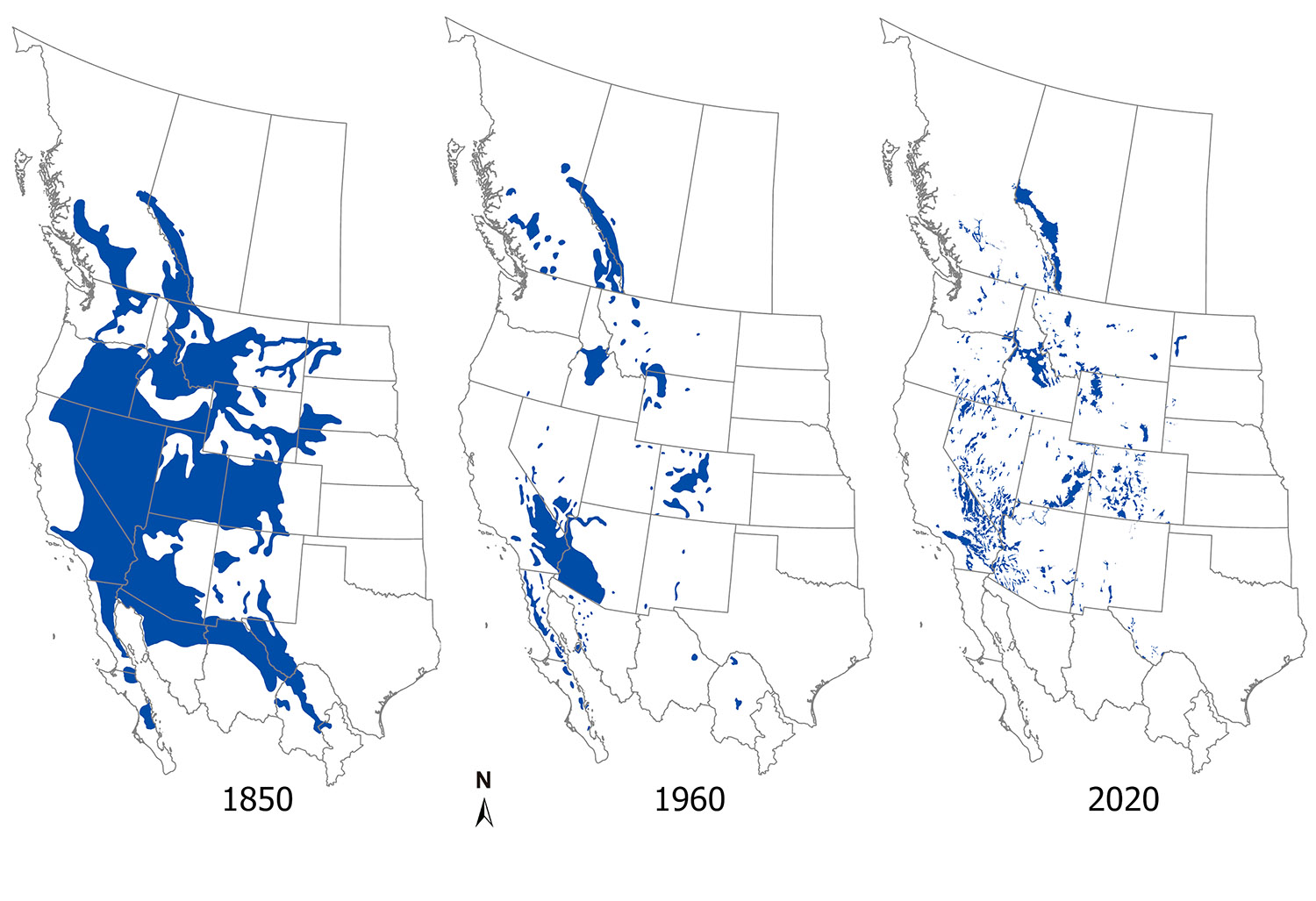Bighorn distribution was dramatically reduced between 1850 – 1960, but through collaborative efforts between conservation organizations such as the Wild Sheep Foundation and our network of Chapters and Affiliates, state, provincial, and tribal/First Nation fish and game departments, public and Crown land-management agencies, private landowners, and other supporters, North American bighorn distribution has dramatically increased over the past ~60 years. Commensurate with increased distribution, in that six-decade period, North American bighorn sheep population estimates have more than tripled from fewer than 25,000 to currently more than 90,000.
Using diverse published and unpublished sources, WSF Conservation Staff modified these distribution maps from Helmut K. Buechner classic monograph “The Bighorn Sheep in the United States, Its Past, Present, and Future” (circa 1850) to also include historic bighorn sheep distribution in Canada and Mexico. Buechner also included a map (circa 1960) showing a significantly reduced bighorn distribution; WSF staff again modified Buechner’s 1960 map to reflect the then-extant bighorn sheep distribution in Canada and Mexico. In 2012, the Western Association of Fish & Wildlife Agencies (WAFWA) Wild Sheep Working Group, using more refined GIS mapping applications, carefully mapped current distribution of bighorn sheep in the same 14 western states that Buechner had mapped, plus added the state of Texas. WSF Conservation Staff again added the current bighorn distribution for Canada and Mexico to the WAFWA 2012 map, to portray the current North American-wide distribution of bighorn sheep.
